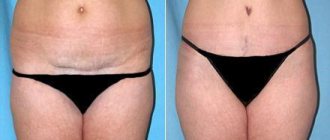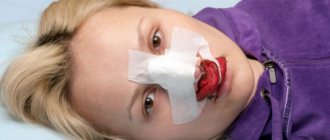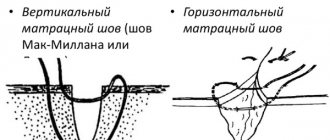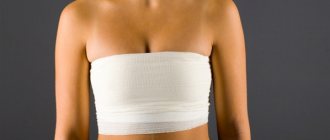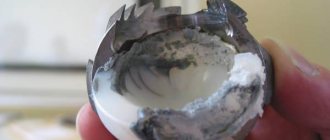Does it hurt to remove stitches? Let's figure it out now. Naturally, any operation is a very unpleasant event that requires great endurance and fortitude. Most likely, it will affect the condition of the body as a whole, and it is possible that for a long time the person will be bothered by slight weakness and somewhat painful sensations in the part of the body that was affected. Of course, today, all unpleasant moments are minimized, but even despite progressive treatment methods, the consequences of any intervention can be the most unpredictable.
Removing stitches. What is this procedure? Why is it being done?
So, in this article we will talk about removing sutures. Note that sometimes suture threads are used, which dissolve on their own after some time. So a person will experience unpleasant sensations only once. There are also those that still need to be taken out. Then you have to remove the stitches. This manipulation is carried out in a hospital.
Does it hurt to remove stitches? Yes, unfortunately, this procedure is not entirely painless. But if you listen to the advice that will be outlined below, then the unpleasant sensations will be reduced and minimized as much as possible. Of course, a lot depends on the nature of the intervention. For example, this could be postpartum suture removal, or it could be postoperative on any part of the body.
Types and features of seams
Depending on the wound, the patient may receive one of two types of sutures - each with its own advantages and disadvantages:
- Submersible . If they were applied to you, then you do not need to worry about removing them. They consist of natural materials that gradually dissolve in the patient’s tissues naturally, without causing rejection by the body. Their disadvantage is their low strength, therefore, when wearing such seams, you need to be careful, avoiding sudden movements and excessive loads. These sutures can consist, for example, of small sheep intestines (catgut). Their resorption is a completely natural process without consequences for humans, caused by hydrolysis and tissue enzymes;
- Removable . They do not dissolve on their own, but must be removed after the wound has healed. Such seams have the advantage of strength, which significantly exceeds the strength of submersible ones. Accordingly, with removable threads, the patient can lead a more active lifestyle. They are made from both natural materials like silk and synthetic ones - nylon, nylon and others. There are also metal seams in the form of staples and wires.
Regardless of the type, the sutures must meet certain requirements: not interfere with blood circulation in the tissues of the wound, not lose strength until it heals, and not leave cavities in it.
Does it hurt or not?
Is it painful to remove stitches if the wound has almost healed and does not ache or bother you? It is difficult to give a definite answer. But in any case, you should remember that this is not a very pleasant procedure, even if the painful area no longer bothers you.
The thing is that at the site of the cut or bruise (where the suture was placed) the skin will be significantly tightened. Therefore, the feeling of removing stitches is not the most pleasant. Of course, this is not some kind of sharp stabbing pain, but still.
A question that worries every patient
Surgery is considered stressful for the human body. Therefore, the doctor’s main task is not only to perform the procedure correctly. It is important that the patient’s body recovers as quickly as possible after the procedure. To prevent life-threatening consequences and death, the surgeon applies stitches. Various types of materials are used for this.
Today, absorbable threads are widely used. However, some surgeons place sutures that must be removed. The speed of wound healing depends on what part of the body the procedure was performed on, as well as on the correctness of its execution. The individual characteristics of the patient (age category, general condition of the body, concomitant pathologies) play a significant role. Many people are concerned about whether it hurts to remove stitches after surgery. The answer to this can be found in the following sections.
How to shoot correctly? Some recommendations
Now we should touch on an equally pressing question: how are sutures removed? It is worth saying that this procedure is not at all difficult and is quite simple to perform if certain conditions are met. So how are stitches removed? Firstly, the surroundings must be absolutely clean. That is, there should be no unnecessary objects, foreign devices, or dirty things. It should be understood that healing is not a guarantee of recovery.
Secondly, the person performing this procedure must wash their hands well and treat them with an alcohol-containing solution. After all these manipulations, the wound itself is treated with an antiseptic. Now let's move on to the most responsible and important moment - we pull out the thread. You need to take tweezers and gently pull the thread towards you. It is likely that several stitches were placed. In this case, all seams are removed sequentially one after another.
Features of the procedure
When the tissue is completely restored after surgery, the sutures must be removed. This manipulation must be carried out on time. The body reacts poorly to foreign bodies, so there is a risk of developing an infection. Doctors always warn patients that this procedure cannot be performed at home. After all, a person who does not have experience in medicine can damage tissue and introduce dangerous bacteria into the wound.
The process of removing threads is quite simple. It is carried out in the hospital. For this, tweezers and scissors are used. After the procedure, the nurse treats the wound with brilliant green and applies a sterile bandage.
Many patients are interested in the question “Does it hurt to remove stitches?” As a rule, this process does not cause discomfort. However, much depends on the individual characteristics of the person and his sensitivity. Typically, patients feel a slight tingling sensation as the sutures are pulled out. Suspicious individuals experience greater discomfort from waiting for the procedure than from performing it. Therefore, a positive psychological attitude is especially important for them.
After what period of time should stitches be removed?
Many people have probably wondered, how long does it take for stitches to be removed? This is an individual matter and depends on many factors (the patient’s condition, the severity of the problem, etc. The location of the suture is also very important. For example, on the face, the sutures are removed after about five to six days. The point is that in this area of the body blood circulates quite quickly, and this, as is known, promotes rapid healing.
In addition, the age of the person is an important factor. In older people, the body takes longer to recover. Accordingly, it will take several times more time than for a young person. And in principle, each person’s body recovers according to its own laws. Everything is purely individual.
Caring for seams
How to remove makeup correctly
The perineal area is very inconvenient in terms of postoperative wound management. Suckers are released from the genital tract, which serve as a breeding ground for microorganisms. You cannot attach a sterile bandage or bandage to the seam. There is always a risk of suture divergence if the woman in labor does not follow the doctor’s recommendations.
How long can you sit after an episiotomy?
The timing is determined depending on the size of the wound. In most cases, 2 weeks is enough. For deep incisions, the period is extended to 3-4 weeks. You can sit on the hip on the healthy side. During this period, you will have to eat or feed the baby while standing or lying down.
This depends on proper processing. If the postoperative period is normal and there is no infection, this lasts 5-7 days. At the end of this period, the doctor removes the external suture.
To prevent this process from taking too long, it is important to follow certain rules:
- sanitary pads are changed after 2 hours;
- after each visit to the toilet, you need to wash yourself in a bidet with warm water from front to back and a solution of potassium permanganate to dry the skin;
- wipe the seam with blotting movements;
- after water procedures, you need to lie down without underwear to allow the perineum to dry completely;
- The sutures are treated daily in the maternity hospital by a midwife, they are lubricated with a solution of brilliant green, the appearance and the presence of signs of inflammation are assessed.
If swelling appears in the suture area, physiotherapy is prescribed: ultrasound, laser therapy, quartz tube. They improve microcirculation and accelerate the healing of postoperative sutures. In the first few days, apply a heating pad with ice through the underwear to the wound area.
After being discharged home, the woman should ride in the back seat of the car in a reclining position. At home, you should refrain from taking a bath for a month. You should wash in the shower or bidet.
The diet should be balanced and not contain foods that have a binding effect. It is not recommended to eat baked goods. On the third day after birth, a laxative is given so that the woman has a bowel movement without straining. If problems with bowel movements occur at home, you can use Microlax microenemas to make bowel movements easier.
Full recovery after episiotomy occurs no earlier than after 1-1.5 months. Unpleasant sensations in the vagina can persist for up to six months. For better scar formation, it is recommended to apply Contractubex gel. It fights inflammation, stimulates cell regeneration without the formation of a keloid scar. But they begin to use it only after the wound has healed; it is prohibited to apply the drug to a fresh wound surface. The course of treatment is 4 weeks.
Ways to reduce discomfort
The question of whether it hurts to remove stitches is relevant for all people who have recently undergone surgery. However, patients should not worry about their well-being. After all, modern medicine has many ways that help get rid of discomfort even after complex surgical procedures. To speed up the wound healing process, products such as orange or tea tree oil are used. They are intended for external use. In addition, experts recommend blackberry syrup with the addition of echinacea. This product for internal use accelerates the healing process. It also helps to strengthen the general condition of the body. If a person has recovered sufficiently, the answer to the question of whether it hurts to remove stitches will be negative.
Features of the procedure after delivery
Many representatives of the fair sex dream of experiencing the happiness of motherhood.
However, the pleasant emotions associated with the birth of a long-awaited baby can be overshadowed by physical discomfort. Is it painful to remove stitches after childbirth? As a rule, this procedure does not cause significant discomfort. It may be accompanied by a slight tingling sensation. It is reminiscent of the sensation that occurs when plucking your eyebrows. The procedure does not take much time. While treating the wound with a disinfectant, the woman feels a slight tingling sensation. But patients usually do not complain of severe pain. It is necessary to remember the rules of body care after surgery. By following a few simple recommendations, you can speed up the healing process and avoid complications.
If the patient’s body is in good condition, the question of whether it hurts to remove stitches and how to quickly restore health will not bother her.


